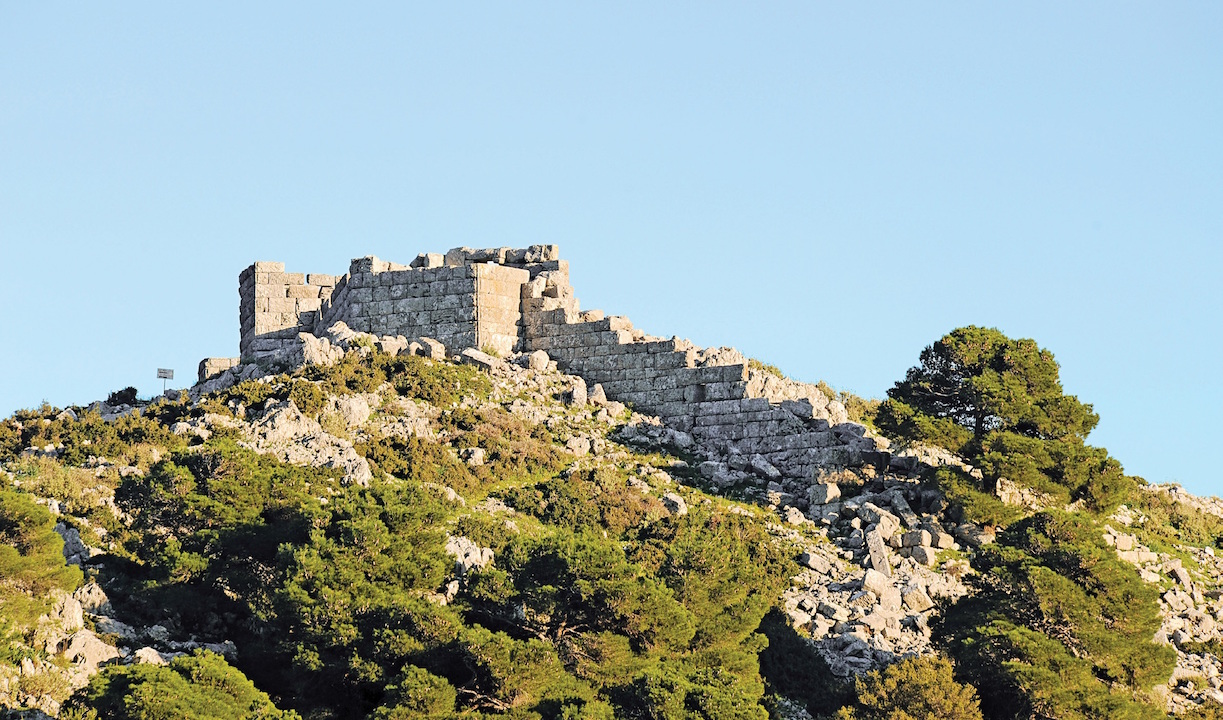Description
The impressive ancient fortress, standing out on the hilltop overlooking the Kaza passage, is identified by most researchers with the citadel of ancient Eleutheres. Currently known as “Gyftokastro”, its erection dates from the 2nd quarter of the 4th century; it includes a walled space of irregularly rectangular shape. The walls were meticulously constructed according to the isodomic system. Along the northern side, seven particularly strong, three-storied towers of rectangular plan have been preserved. The fortress of Eleutheres was located in a highly strategic position overlooking the significant passage on the road connecting Athens to Thebes. It was built either by the Thebans or the Athenians, as part of a wider network of frontier forts aiming at stopping the advance of invaders. Eleutheres belonged initially to Boeotia. According to some traditions, it was the birthplace of the god Dionysus, who was worshiped there as “Eleuthereus”. During the 6th century, the people of Eleutheres took the side of the Athenians, a fact that should be associated with the transmission of the cult of Dionysus Eleuthereus to Athens. The remains of a temple dedicated to Dionysus Eleuthereus have been identified to the south of the fort.
Images



×
Location
Description
The impressive ancient fortress, standing out on the hilltop overlooking the Kaza passage, is identified by most researchers with the citadel of ancient Eleutheres. Currently known as “Gyftokastro”, its erection dates from the 2nd quarter of the 4th century; it includes a walled space of irregularly rectangular shape. The walls were meticulously constructed according to the isodomic system. Along the northern side, seven particularly strong, three-storied towers of rectangular plan have been preserved. The fortress of Eleutheres was located in a highly strategic position overlooking the significant passage on the road connecting Athens to Thebes. It was built either by the Thebans or the Athenians, as part of a wider network of frontier forts aiming at stopping the advance of invaders. Eleutheres belonged initially to Boeotia. According to some traditions, it was the birthplace of the god Dionysus, who was worshiped there as “Eleuthereus”. During the 6th century, the people of Eleutheres took the side of the Athenians, a fact that should be associated with the transmission of the cult of Dionysus Eleuthereus to Athens. The remains of a temple dedicated to Dionysus Eleuthereus have been identified to the south of the fort.




